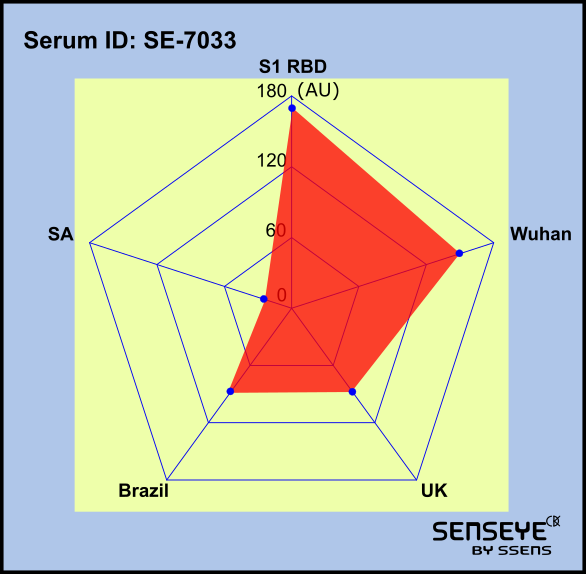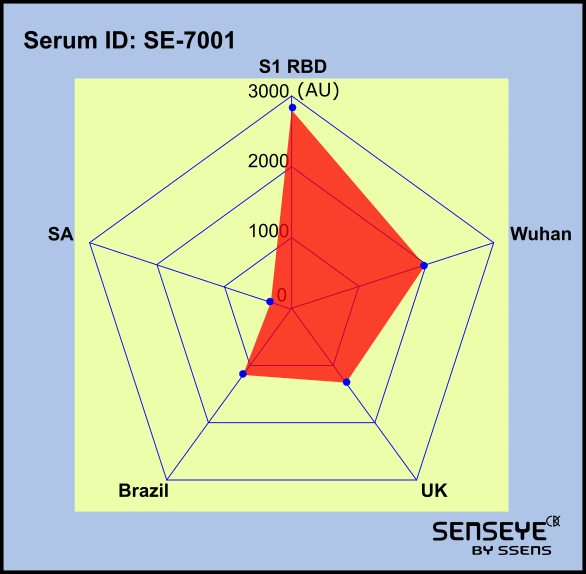
Introduction SensEye G SARS-CoV-2 Variants MP5
After SensEye launched the first CoViD-19 SPR-sensor in May last year, SensEye now launches the first sensor to study the simultaneous antibody binding to the trimeric spike protein of SARS-CoV-2 variants of concern. Beside the spike protein of the wild type variant of the virus (Wuhan), the sensor includes the UK (B.1.1.7), South Africa (B.1.351) and Brazil (P.1) variants. For ease of data interpretation, wild type S1 (RBD containing) protein has also been included on this SensEye.
The new SensEye requires minimal sample volumes (<100 µl serum) and the simultaneous interaction with all variants requires less than 30 minutes analysis time per sample. For example, this SensEye can be applied for the screening of populations for the immune response induced by different vaccines and to study the time-dependency of this response. Furthermore, it can be used to study and/or predict the immune response of ex-CoViD-19 patients to new variants.
This versatile SensEye can be easily and rapidly expanded with other variants and can be customized towards the user’s wishes. Please contact SensEye to discuss possibilities.
Initial results of the screening of a limited number of sera from former CoViD-19 patients (see graphic below) using this new SARS-CoV-2 variants MP5 sensor showed a large variability in presence of antibodies against the different variants. Despite this large variability, the extent of antibody binding to the Wuhan variant correlates well with the antibody binding to the S1 protein of this variant. Antibody binding to the Wuhan variant also seems to correlate with antibody binding to the UK variant. No such correlation was observed between antibody binding to the Wuhan variant and to both the South Africa and Brazil variant. Ex-CoViD-19 patients with a pronounced binding of antibodies to the Wuhan variant but without antibody binding to the Brazil and/or especially the South Africa variant were present. Further research should elucidate whether these ex-patients are protected against these variants.
These initial results show the great value and large contribution this new sensor may have for CoViD-19 research, for instance in the evaluation of the immune response upon vaccination.

